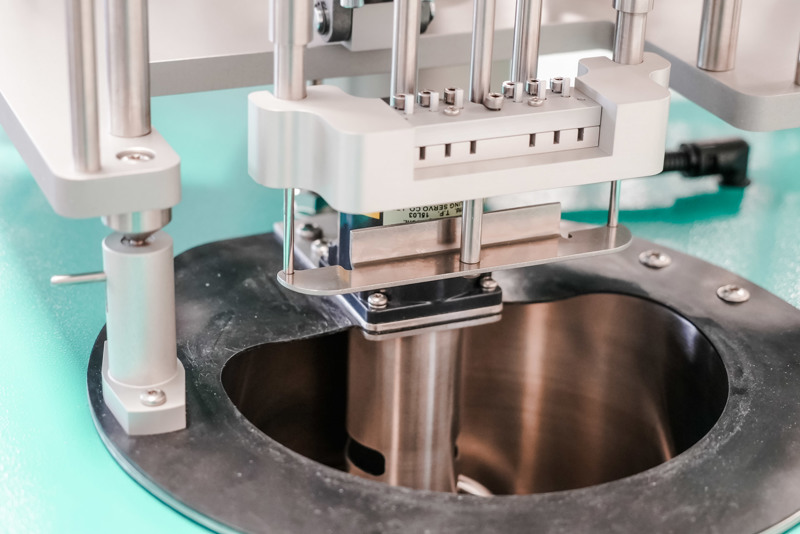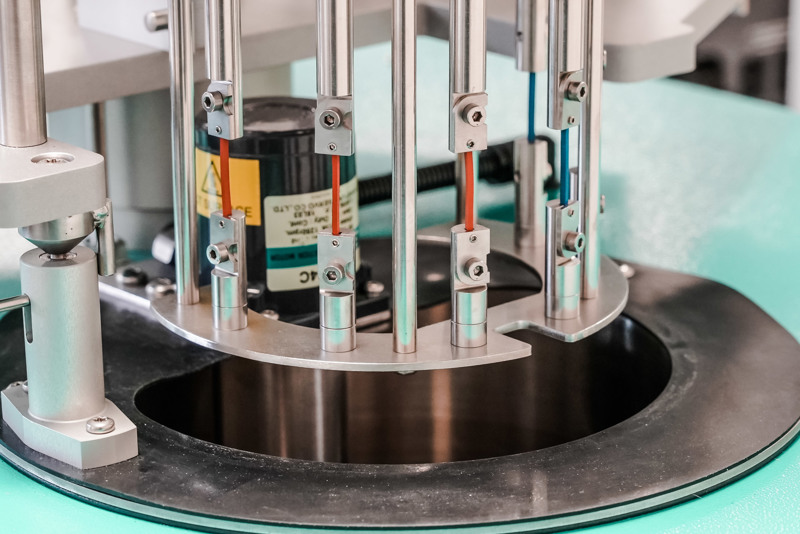In addition to common tests such as Tr10, DSC or cold DVR, Minz Prüf + Test GmbH now has two further methods available for determining the cold behavior of elastomers. Since May 2023 our laboratory can offer you both Gehman tests according to ASTM D1053, ISO 1432 a.o., and Brittleness tests according to ASTM D2137, ISO 812 a.o.. For this purpose, we have the most modern testing equipment from Elastocon at our disposal.
Gehman Test
In the Gehman test, test specimens are subjected to torsional stress in a temperature range from -80°C to 20°C. The torsional modulus determined in this way gives an indication of the strength of the specimen. The torsion modulus determined in this way provides information about mechanical properties at low temperatures and shows the temperature transition range from the glassy to the rubbery state of the elastomer sample.
Brittleness Test
In the Brittleness test, an impact test is carried out in a temperature range between -80°C and 20°C at different impact velocities of 0-2.1m/s. The lowest temperature at which the specimen is subjected to an impact test is the lowest temperature at which the specimen is subjected to an impact test. The lowest temperature at which the specimen shows no fracture is finally given as the cold brittleness temperature.under similar conditions.
The data obtained with this test method can be used to make predictions about product behavior in the application under similar conditions.
If you have any questions about our new test methods, please feel free to contact us for a consultation.

